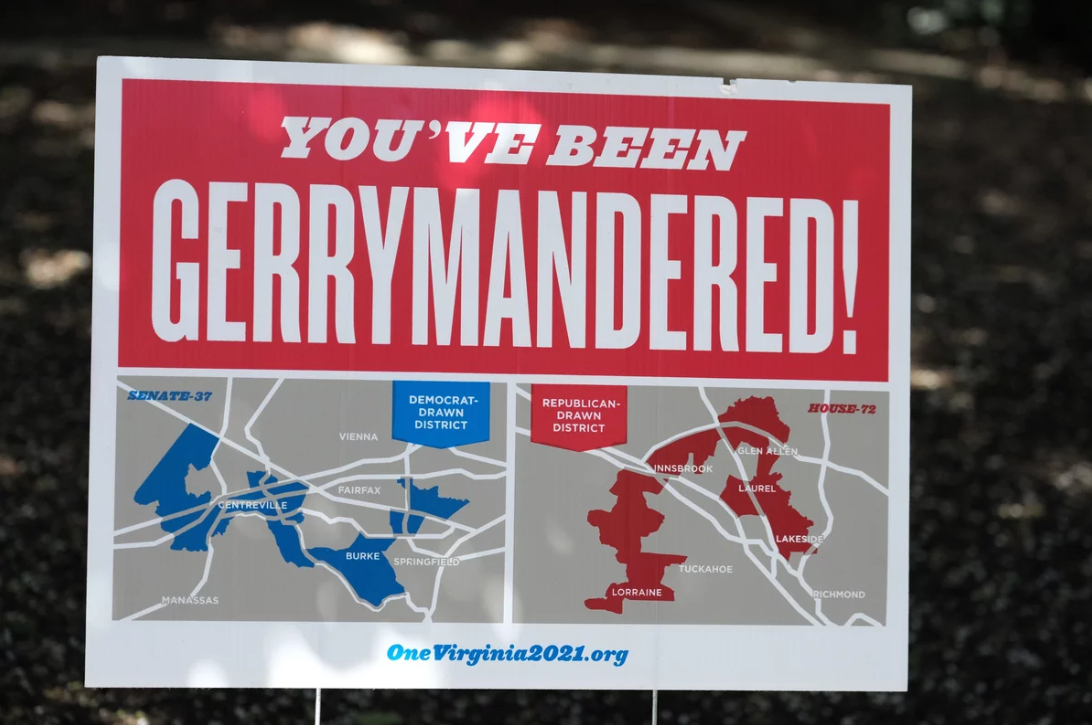Ronald Reagan called it “anti-democratic and un-American.” Barack Obama blamed it for partisan polarization. It seems politicians across the political spectrum can agree: Gerrymandering is bad for democracy. First coined in 1812 to describe a Massachusetts congressional district whose shape resembled a salamander, gerrymandering has since become a staple in American politics. It has been used by state officials to drastically alter the partisan makeup of their congressional districts, impacting not just their own state’s politics but those of the nation more broadly. After their strong performance in the 2010 midterm elections, Republicans seized the opportunity to draw districts with a conservative edge, giving them a double-digit advantage in the House of Representatives, leading to strong Republican majorities in the House until 2018, despite the party frequently losing the national popular vote. Political disparities like the 2010s are a primary reason why so many public figures denounce gerrymandering as antithetical to democracy. But what if they’re wrong after all? After the 2020 Census, both Democrats and Republicans had a chance to redraw districts in blue and red states, respectively. The result of this redistricting surprised many: It was fair. For the first time in decades, the apportionment of congressional districts closely matched the actual partisan division of American voters. Gerrymandering certainly wasn’t abandoned; in fact, it was embraced by both sides of the aisle. This most recent redistricting process shows, however counterintuitively, that the short-term solution to gerrymandering may just be more gerrymandering.
Throughout the 2010s, Democrats led the charge against partisan gerrymandering in the courts, the legislatures, and in activist communities. This noble effort was also politically motivated. Republican gerrymandering efforts in the 2010s had so effectively warped congressional districts that in 2012, multiple states saw Democratic victories in the popular vote but allocated less than one-third of their districts to Democrats. Across the media and political community, particularly in liberal circles, calls to end gerrymandering proliferated. By the end of the decade, then presidential candidate Joe Biden remarked on the “[rigged] political process” encouraged by partisan gerrymandering, drawing anti-gerrymandering rhetoric into his plan for democratic reform. Given all this national discourse, the actual redistricting process of 2020 seemed almost anticlimactic. Perhaps, however, Democrats’ sudden silence on the issue of gerrymandering was a result of the opportunity they now possessed to gerrymander their own states and actually even the score.
In states like New Mexico and Maryland, Democrats have been criticized for gerrymandering heavily, which runs counter to their party’s calls to end partisan redistricting. Charges of “hypocrisy” have been directed toward Democratic officials, but these back-and-forth arguments only serve to complicate the issue and ignore the fundamental reality that neither side wants to admit: Party structures like gerrymandering. It allows them to keep incumbents, namely themselves, in office for as long as possible by choosing the voters in their own district. Additionally, party establishments can use their gerrymandering power to punish incumbents who stray from party orthodoxy by making it more difficult to win reelection or eliminating their district entirely. This may seem immoral, but there’s an argument for gerrymandering that every American can get behind: It’s possible that Democrats’ heavy use of gerrymandering in 2020 may have actually had a positive impact on the fairness of American election maps as a whole.
Political analysts predicted a strong redistricting cycle for Republicans, which would have provided them even larger gains than the one they enjoyed after 2010. These predictions turned out to be wrong. Democrats in blue states gerrymandered aggressively, creating multiple new blue districts that counteracted the gerrymandering done in Republican states. This created a map that only favored Republicans by three seats, a minor tilt in comparison to previous decades, posing a question for political scientists: Is gerrymandering inherently antidemocratic, even if it yields fair maps? Many would argue that yes, gerrymandering is still problematic as it encourages “safe” districts that bolster partisan polarization. Furthermore, partisan gerrymandering can frequently manifest itself as racial gerrymandering, causing fear of underrepresentation for certain groups in Congress, specifically African Americans in the South.
Certainly, our current system of redistricting is deeply flawed. The ugly truth, however, is that any changes to the redistricting process nationwide will have to garner bipartisan support to be successful. This seems unlikely given the Senate’s track record over the past few years, so it’s important to recognize ways to draw fair maps with the system we currently have. It’s possible that 2020 was a fluke, or it’s possible that competitive gerrymandering from both sides of the aisle can actually yield fair, representative congressional districts at the national level. Regardless, it seems we’ve stumbled upon the best possible outcome for apportionment as it stands, and it would be foolish for one side to cease the practice simply out of a sense of moral superiority.
